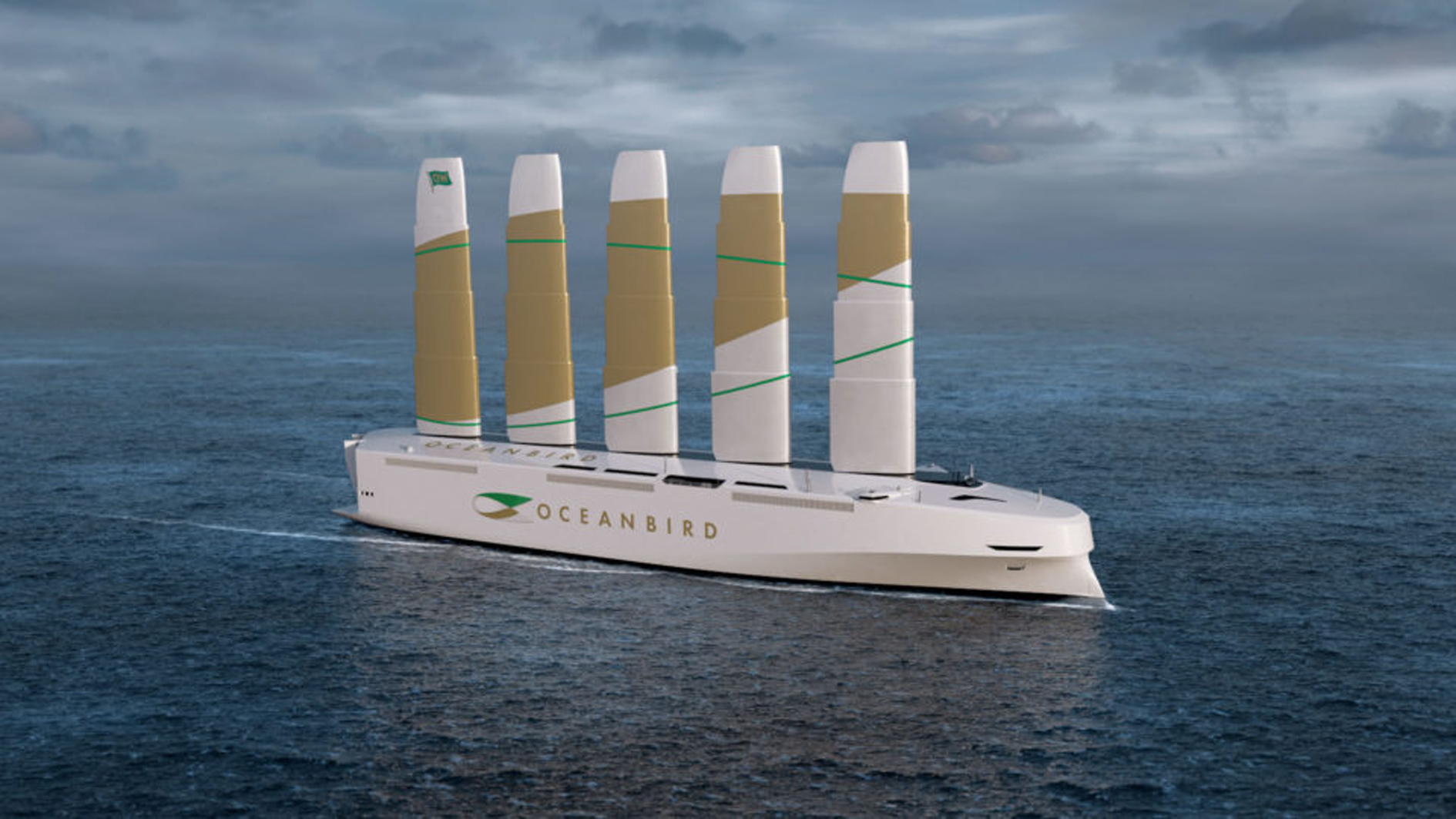Swedish cluster introduces Oceanbird

Oceanbird aims to leave 90% less emissions than today’s vessels (Source: Wallenius)
A Swedish consortium has developed a wind-powered car carrier design capable of carrying about 7,000 vehicles. Called the Oceanbird, it is a project from the KTH Centre for Naval Architecture, shipping group Wallenius Marine and maritime technology developer SSPA. The Swedish Transport Administration agreed funding for the project from 2019 through to 2022.
It is hoped the first ship could be in service in four years. Wallenius said the wind-powered car carrier (wPCC) design mixed aeronautic and shipbuilding technology. The sails, made of metal and composite materials, will be nearly 80m high, about twice the height of the largest sailing ships, and can be reduced for high winds to around 50m.
“It is a technically challenging project,” said the developers. “The rigging and hull will work together as a single unit to harness the wind in the most efficient way. The hull has been designed for a large sailing vessel that will transport heavy cargo over long distances for long periods of time.” The 200m-long ship will be fitted with engines for port manoeuvres, but the use of the sails for long-distance transport could reduce exhaust emissions by 90%. Estimated sailing time across the Atlantic is 12 days, compared with about seven for fuel-powered car carriers. Shipping lines will be able to order a wPCC at the end of next year.
